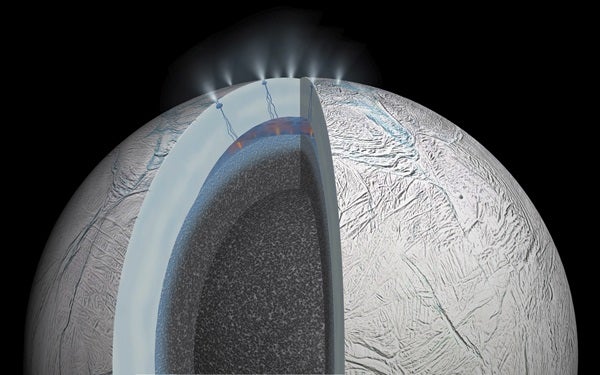Gravitational forces differ on the sides of the moon nearest and farthest from the planet, and their strength changes during the course of the satellite’s orbit. This creates internal friction that heats the interior of the moon. There is more or less constant flexing and heating between Jupiter and Saturn and their major moons.
In the case of Enceladus, the Cassini spacecraft detected geysers or jets spewing material from the surface into space. These geysers are most likely caused by tidal heating and the formation of chambers, similar to magma chambers but filled with water and volatiles instead of molten rock, that flex due to tides. Hence, gravitational flexing and tidal heating provide the energy that powers the jets of Enceladus.










